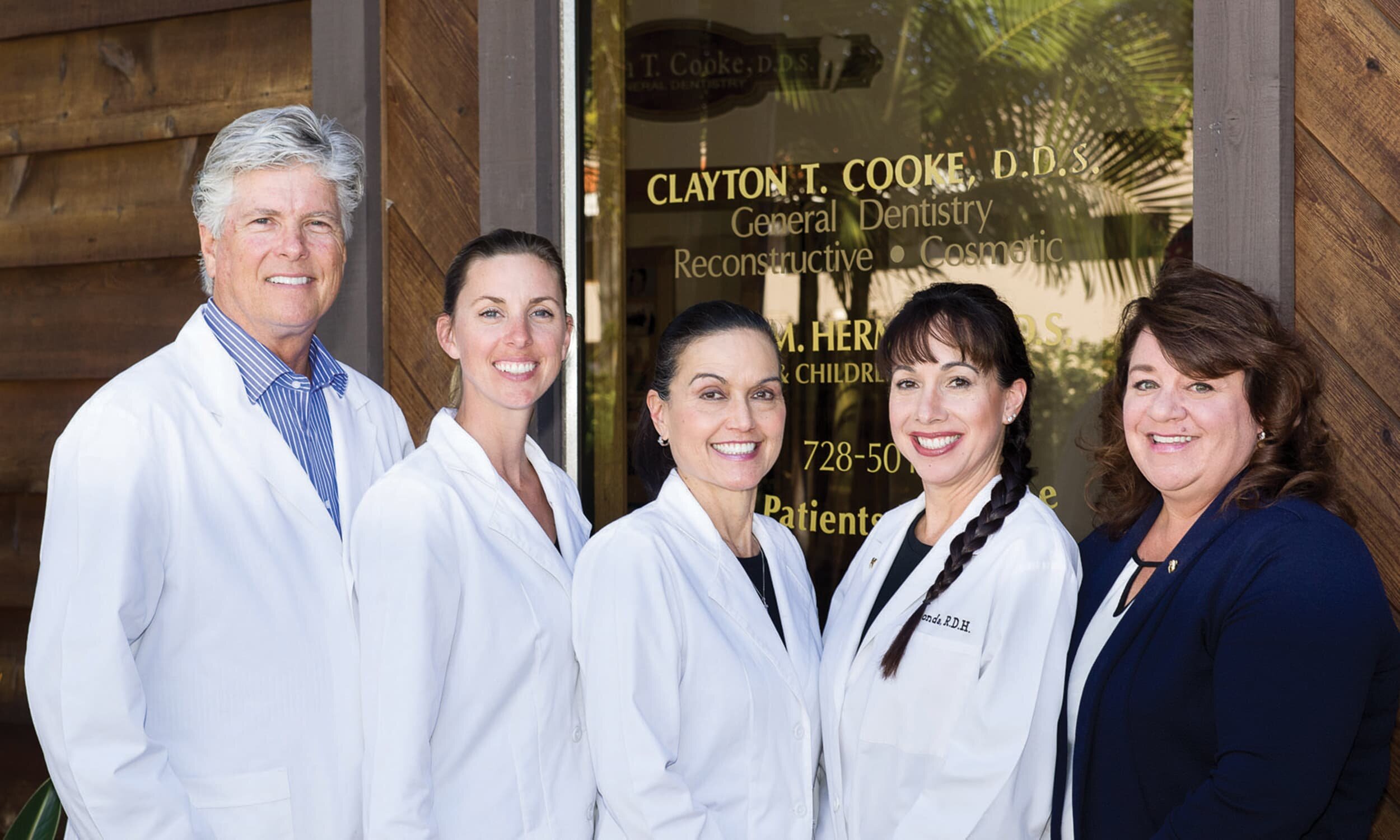Dr. Clayton T. Cooke is a multi-award-winning dental professional who is known for his exceptional patient care and creating the most beautiful smiles in the profession.
A native San Diegan, Dr. Cooke completed his bachelor’s degree at Whittier College and graduate degree from the University of the Pacific School of Dentistry. While his alma mater has been noted as being in the forefront of colleges by US News & World Report, Forbes, and the Princeton Review, Dr. Cooke has established a history of being one of the best and most accomplished dental professionals in Southern California.
An individual who has always been determined to advance to the very top in technological excellence, Dr. Cooke is an academic who has studied the best and most successful techniques in the dental discipline. His knowledge of occlusion and cosmetic dentistry practices cannot be rivaled.
Using a proven service-oriented management style, Dr. Cooke has developed his practice with consumer-friendly technology and practices that patients benefit greatly from.
Underscoring the fact that occlusion and function are equal partners to aesthetics, Dr. Cooke is able to place the wellbeing of his patients at the very forefront. He knows that the way the teeth fit together is the key to the patient’s comfort and the teeth’s longevity.
There are many aspects to providing outstanding dental care and Dr. Cooke is proud to employ a very comprehensive approach to each patient’s case. His amazing hand-eye dexterity assists him in delivering an overall look of natural beauty and outstanding function to his patients.
Continuing education in the latest technology has to offer is very important to Dr. Cooke and his staff. He ensures that his entire care team attends vital, state-of-the-art workshops in advanced techniques to best serve his patients.
In his personal life, Dr. Cooke enjoys spending time with his wife, Patti, three grown daughters, and their families. His hobbies include golf, travel, and botanical gardening.
Upon meeting and speaking with him, you will see why Dr. Clayton Cooke is a highly regarded professional who receives numerous referrals from patients.












